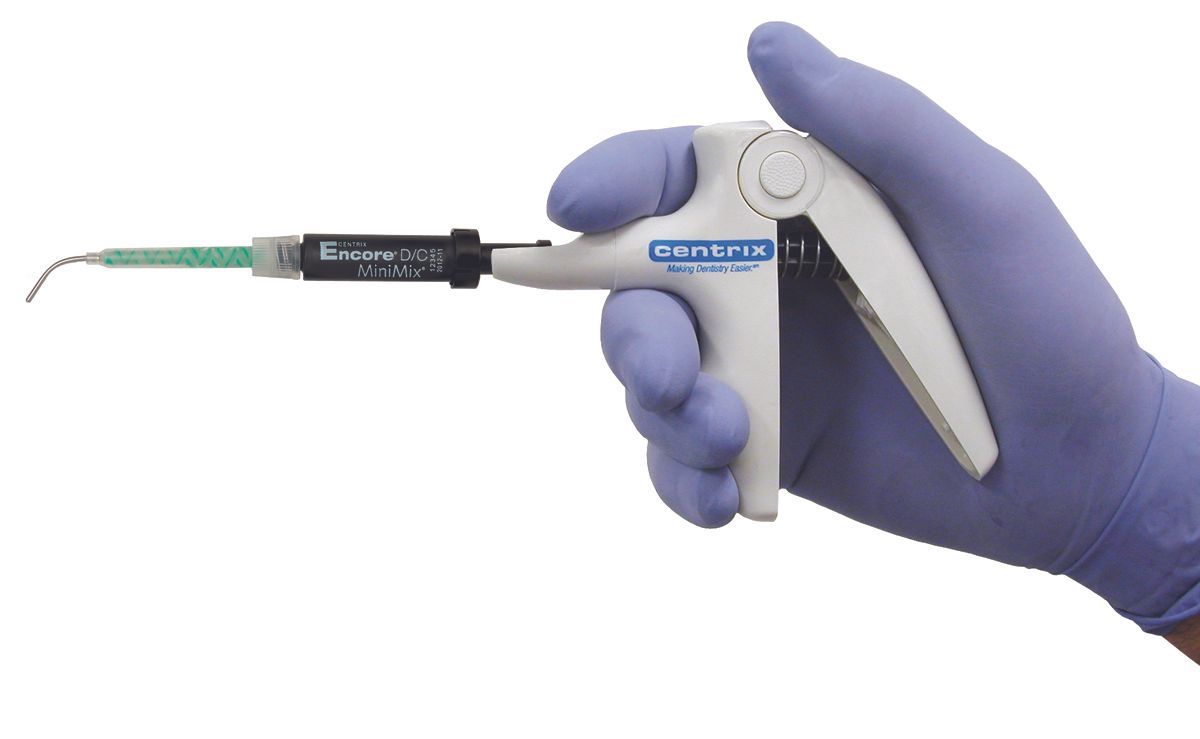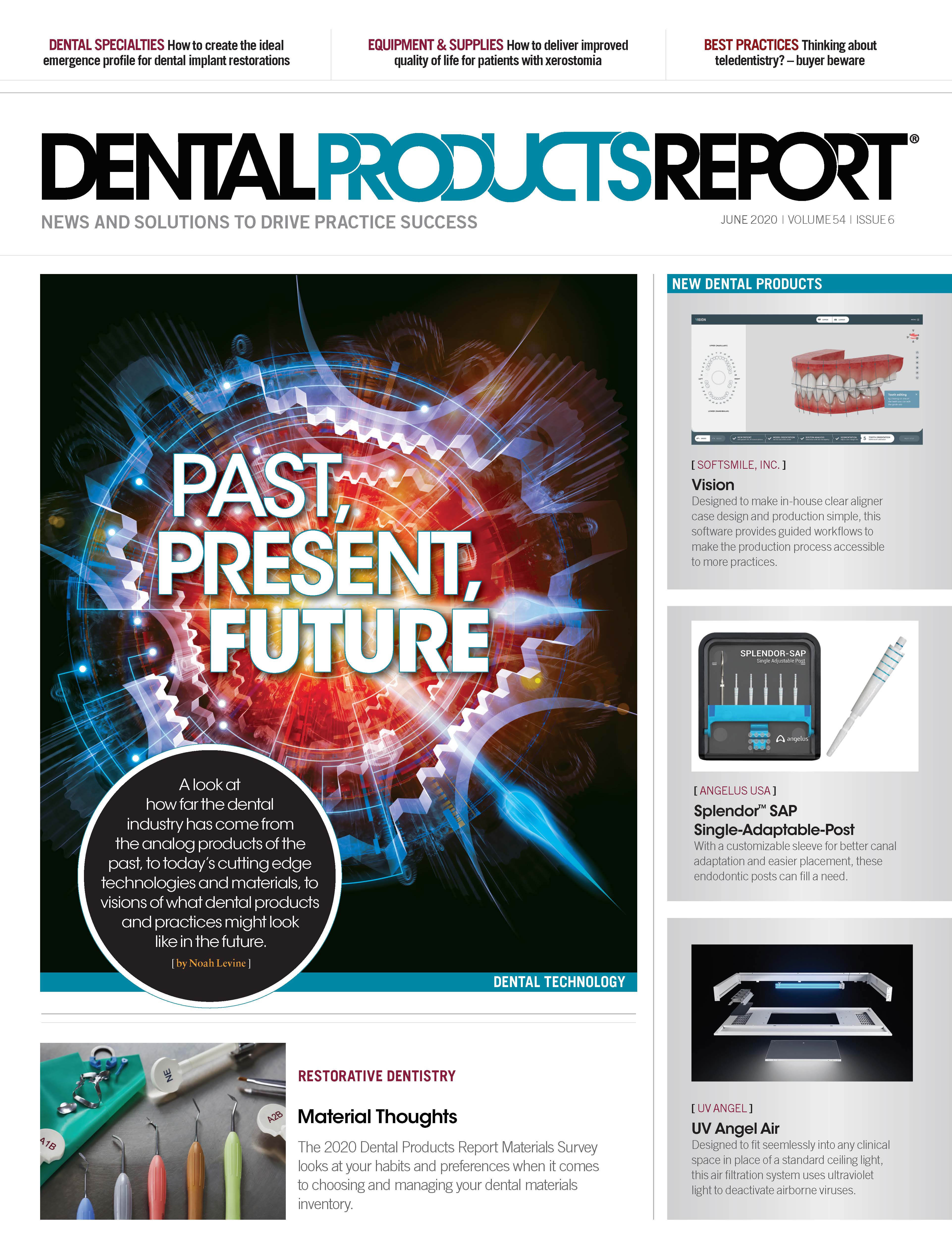Information provided by Centrix.
Encore® D/C MiniMix®
- MiniMix 0.5-milliliter unit-dose technology eliminates waste and cross-contamination concerns
- Small size is more easily maneuvered in the mouth, and the longer mixing tip enables easy application down canals in second and third molars
- Small format is less threatening and more comfortable for sensitive patients
- Kits include single-dose 0.5-milliliter cartridges (12 or 36) and mixing nozzles (24 or 72)
Centrix
203-929-5582 | centrixdental.com
Practitioners can choose from a number of techniques and products for performing direct restorative procedures. I have learned that it is critical to find the techniques and materials that give me the confidence to know the case will turn out well and that the patient will get a great final restoration.
In my practice, I use a number of products from Centrix that give me this confidence and allow me to work efficiently while delivering optimal care. In my opinion, Connexio self-etch bond from Centrix is the best choice when using a dual-cure or self-cure core buildup material. There is no need for an etching step, as with fourth- and fifth-generation materials, and this method is chemically compatible, as opposed to most of the self-etching bonding, with dual-cure or self-cure composite materials.
Encore D/C dual-cure formula is designed to speed procedures and ensure complete cure of all material, regardless of depth or placement of the final restoration. The nonslumping formula eliminates the need to use a matrix/core-form.
The following case study shows how a number of Centrix products can work together to combine for an end result that leaves the patient with a final restoration that both functions well and is long-lasting.
Case Study
The patient, a 42-year-old man, presented in our office with multiple problems. Figure 1 shows the initial radiograph. We decided to start with something easy to gain confidence from the patient, who described himself as having a dental phobia.
On clinical inspection, an occlusal decay was observed on tooth No.15 (Figure 2). The tooth responded positive to vitality tests, and the patient described it as asymptomatic in the past.
After anesthesia and isolation with a rubber dam, most of the decay was removed first with a diamond-coated spherical bur and then on low RPM with a carbide bur for dentin (Figure 3).
Even when using a dental microscope, it can be impossible to tell with confidence which is infected, affected, stained, and sound dentin. For this reason, I always use caries detectors. I prefer Expose from Centrix because it is dried and already contains the dye, and the results are predictable, with no false staining of sound dentin. After applying it on moist dentin, the tooth just needs to be washed, and what is left stained is infected dentin. As shown in Figure 4, the caries detector reveals what part of the dentin is still infected.
A direct restoration was chosen, and after applying the etchant on enamel for 20 seconds, dentin was also etched for 10 seconds. Figure 5 shows use of Meta Etchant gel from Meta Biomed. A bonding agent was used after washing the etching gel with water spray and the dentin was left slightly moist.
Because the cavity was so large and stratification would take a long time and require multiple layers, most of the cavity was filled with core buildup material. Encore D/C MiniMix from Centrix was applied up to 2 millimeters to the occlusal plane. First, a thin layer of flowable composite was placed to fill all the micro relief using VersaFlo from Centrix (Figure 6). Next, the VersaFlo composite material was adapted with an explorer (Figure 7).
Encore was then applied as bulk fill, with small adjustments made to adapt the material better with the help of Benda Micro (Figures 8 and 9). Encore was left to self-cure to avoid additional shrinkage caused by light curing. A 1- to 2-millimeter space up to the occlusal plane was left to allow for the final layer of composite (Figure 10).
Use of a delayed cure technique avoided additional shrinkage by light curing the material first. With this technique, when working with dual-cure materials, let it first self-cure for 3 to 5 minutes, then light cure the material. The benefit is less shrinkage, usually half of that from light curing first. Just be sure the bonding is compatible with dual-cure materials.
In the end, light cure composite was placed cusp by cusp with ceram.x from Dentsply Sirona (Figures 11 and 12).
A final light curing was performed through glycerin to remove the oxygen-inhibited layer.
Finishing, and especially polishing, are often overlooked, but they play key roles in the longevity of the restoration. After using carbide burs for finishing the composites (Figure 13), points were used, and Couture diamond coated paste from Centrix was used for high-gloss polishing (Figure 14).
Fortunately, no adjustment to occlusal relief was necessary after removal of the rubber dam.
The final completed restoration can be seen in Figures 15 and 16. This was a tricky case with a sensitive patient, but the end result was a good one for both the clinician and the patient.

